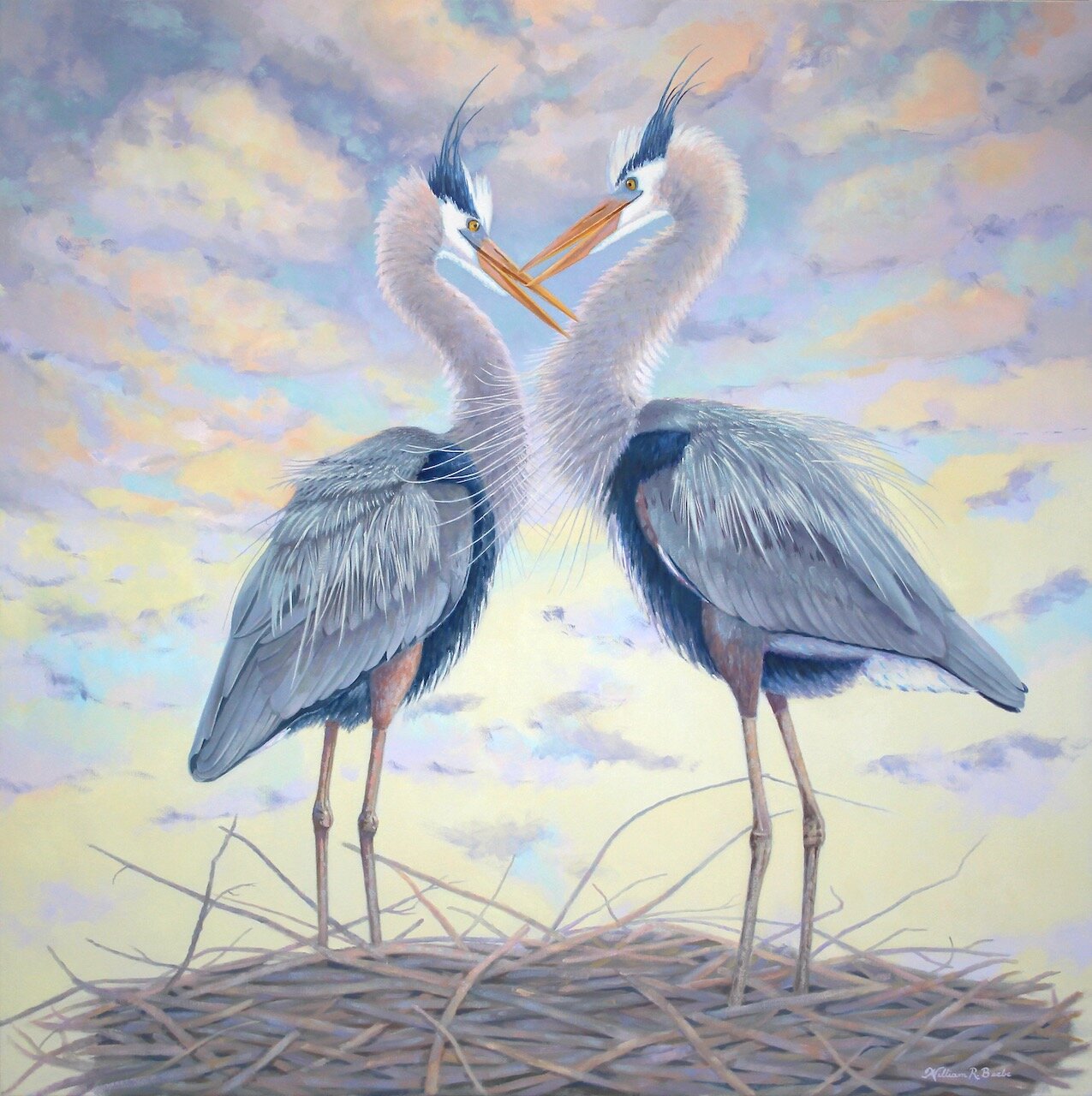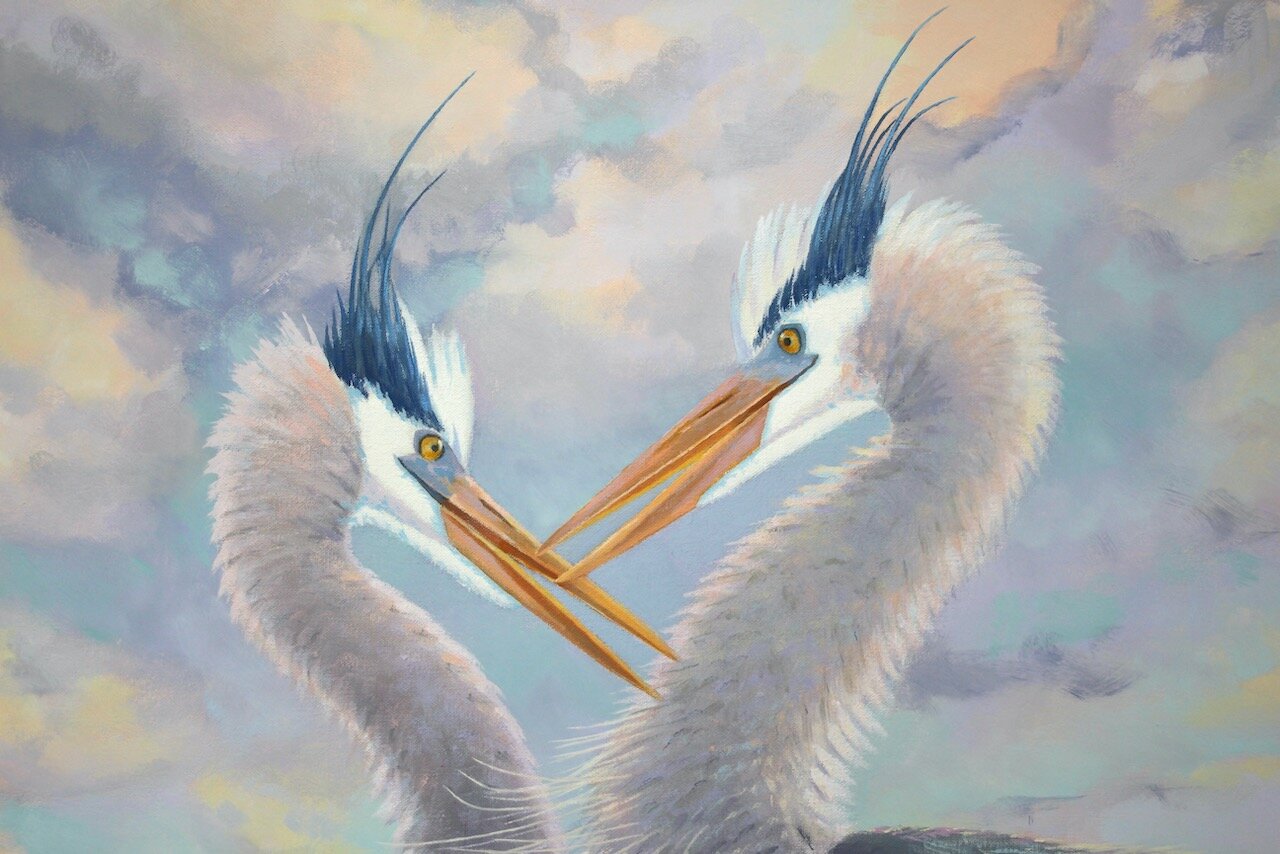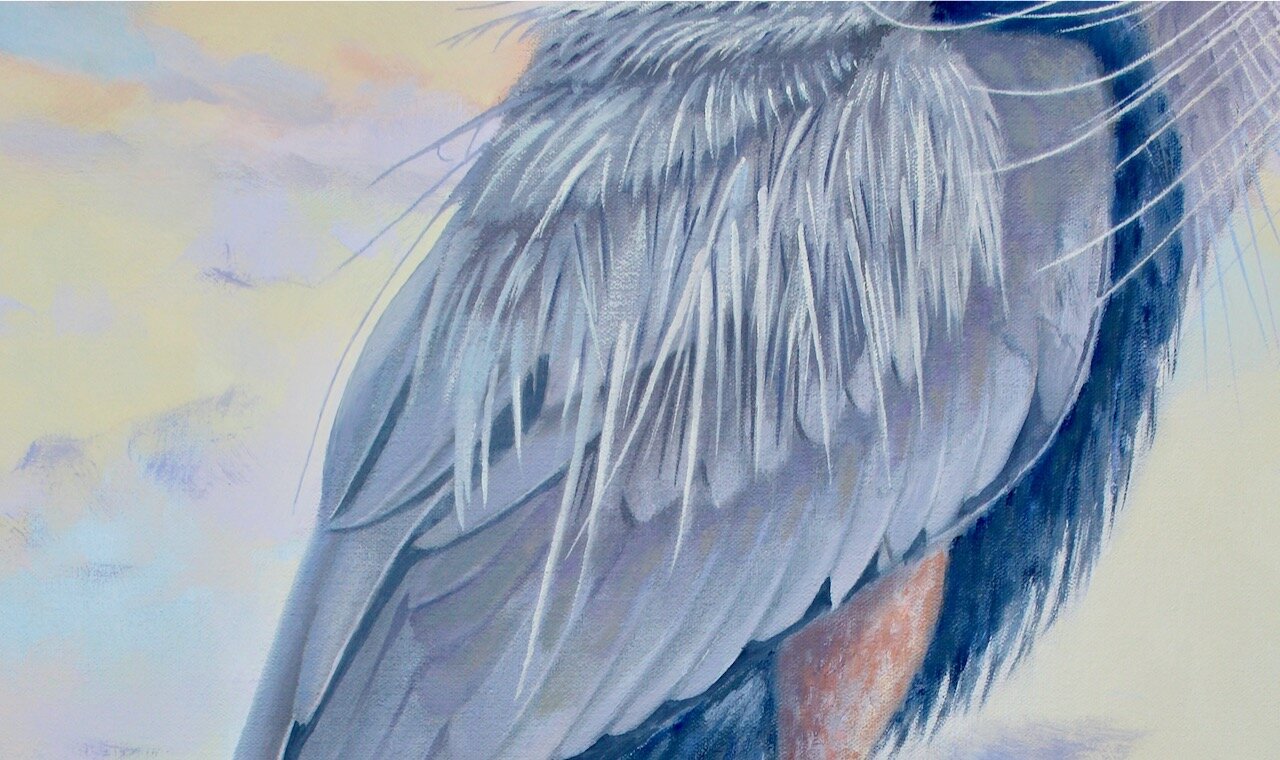Smitten




Smitten
Framed oil painting
40 x 40 (image size) oil on canvas
Smitten ~ Here’s looking at you, kid!
It usually only happens once a year! All year long Great Blue Herons remain solitary, hunting and fishing for food. Rarely do I see two together, and if I do they are chasing the other one away from their territory. Instinctually, they return to the same nesting grounds every late winter/early spring here in the Lowcountry and pair up to build their nest and raise a family.
This spring I captured on camera a pair of Great Blue Herons that appeared to be totally smitten. Their excitement over being with each other was evident by the way they gazed into each other’s eyes.Their long aigrette neck feathers flared and interlocked as their S shaped necks formed a heart. Both birds’ head feathers stood erect and love was in the air!
Standing atop the large nest they were building together, 20 feet above the Audubon Swamp at Magnolia Plantation in a bald cypress tree, the two herons spent an unusual amount of time together while I photographed them.
In a heron relationship, the male retrieves most of the branches while the female skillfully weaves them together with her beak. Each time the male returns to the nest the courting rituals take place.
This is an exciting time for photographers and artists like myself. Witnessing the herons interacting is a thrill. It’s a side of Great Blue Herons that most people never see. Even with a good number of birding trips to the Swamp, we don’t always get to see the two herons together. Timing is everything.
These two lovebirds captured my heart and inspired me to paint them. My painting is entitled Smitten because of the look in their eyes. I decided to go large, painting on a 40” by 40” canvas, to try and give a sense of scale to the dramatic moment between these two very large birds.
The romantic, colorful evening sky is the entire backdrop as the two herons are in their own world, high above the dangers below. The original photo has the trunk of the tree running right up the middle of the image between the two birds, which I found to be distracting. It is known as “the stick tree” at the Swamp, so I hesitated to take it out of my painting. But, there are many other nests at the Swamp where the nest is out on a branch with the trunk of the tree off to the side, like I depicted in my painting.
I also removed the dreary background trees, placing the nest higher up in the sky. Many herons nest in trees 60 feet in the air or even higher. This was to elevate the birds up into the heavenly clouds to help create an ambience.
The pair ended up successfully raising one of their three offspring. We watched Junior grow with each passing week, going from peach fuzz to real feathers. Each parent took turns feeding, but as one would feed the other would take off.
Less time was spent with each other as Junior became their main focus. As Junior fledged the adults spent less and less time at the nest, encouraging Junior to become more independent and eventually leave the nest.
Hopefully, they will meet up again next year, at the same time and the same place, but there are no guarantees for Great Blue Herons are for the most part monogamous for the season, but not for life.
So, bidding farewell to his starry-eyed mate before he flew off into the sunset, his departing line was lifted from the classic romance film Casablanca, “Here’s looking at you, kid.”
